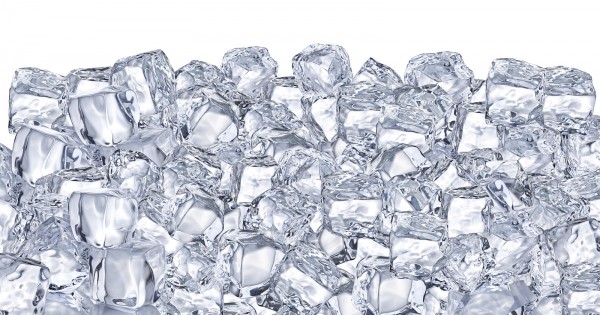Did you know ice is considered a food? According to the U.S. Food and Drug Administration codes, ice is categorized as a food. As such, you should train your staff to handle ice just the way they would handle other types of food for food safety, sanitary and regulation purposes. One of the biggest misconceptions is that ice cannot harbor bactria or viruses because it is too cold. While it is not as bad as a heated environment, it can be equally dangerous to your patrons.
Here are the top 6 tips for handling ice in a restaurant or commercial establishment.
1. Use Gloves
When your staff handles ice with bare hands,microscopic dirt and germs can be easily transferred from the surface of their hands to the ice. This cross contamination can adversely affect the safety and health of your customers. Your staff should be trained to first wash their hands thoroughly and then put on gloves. These gloves can also cross contaminate, so frequent changes are also suggested. This will prevent transmission of bacteria and viruses from your staff
2. Always Use an Ice Scoop
If you want to fill ice buckets or glasses from the ice machine storage bin, always use an ice scoop to lift out the ice. Never allow bare hands to touch the ice as it can lead to cross contamination. This is helpful as long as it is used properly. (see #3)
3. Store Scoops Sanitarily and Clean Every Day
How you store the scoop is important. Never store the ice scoop in the ice machine. This increases the risk of transmission of bacteria and germs from the handle. It is best to store scoop on a dedicated holder for easy access. It is also recommended to clean or sanitize the ice scoop every day. This can be done by proper cleaning with soap, using a sanitizer, pouring boiling water or running the scoop through the dishwasher.
4. Do Not Reuse Ice
Once ice is removed from the storage bin, it should NEVER be put back. Obviously, if it was used, it should be discarded, but more specifically we are talking about at the time of removal. We see this all the time where someone removes too much ice or tries to fill a glass of ice holding it over the bin to catch the excess. Once ice touches anything else, assume it is contaminated and should be kept away from the ice bin full of fresh ice. Any leftover ice should be discarded.
5. Clean the Ice Machine Once a Month
All ice machines have a clean mode, but it is the least used option on any ice machine. An ice machine is a closed box and "out of sight out of mind" prevails. In addition to the condenser (air flow) it is so important to flush the machine of impurities collected over time which can contaminate your ice. It is a simple process and should be done with food safe checmicals or a bleach mixture. The only real effort is discarding all the ice from the bin during the cleaning so the checmicals do not mix with the ice for use., You should take the time at this point to also wipe down the inside of the bin or spray it with food safe chmicals or a bleach mixture. Make sure to rinse the machine thouroughly and then turn it back on to the ice making mode. Always check your owner's manual to see how to clean and sanitize your specific ice machine. We also recommend to hire a professional to regularly maintain the machine.
6. Use a Water Filter
No matter how good you think your water quality is, use an ice machine water filter. This is the cheapest long term solution you can find. Not only will this give your cusomers better tasking a safer ice, but will also keep your machine running better since it will remove many harmful elements from running though your machine.
By considering these 6 important ice handling tips, it will ensure your guests will be receiving clean, safe and better tasting ice for their food and beverages.

